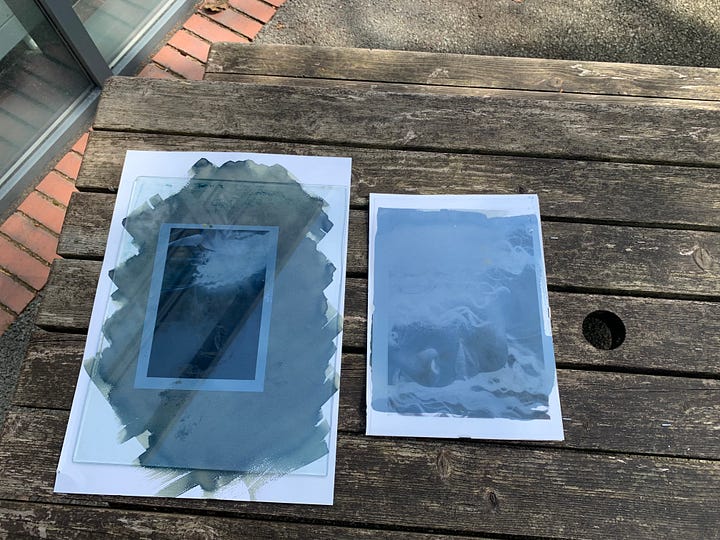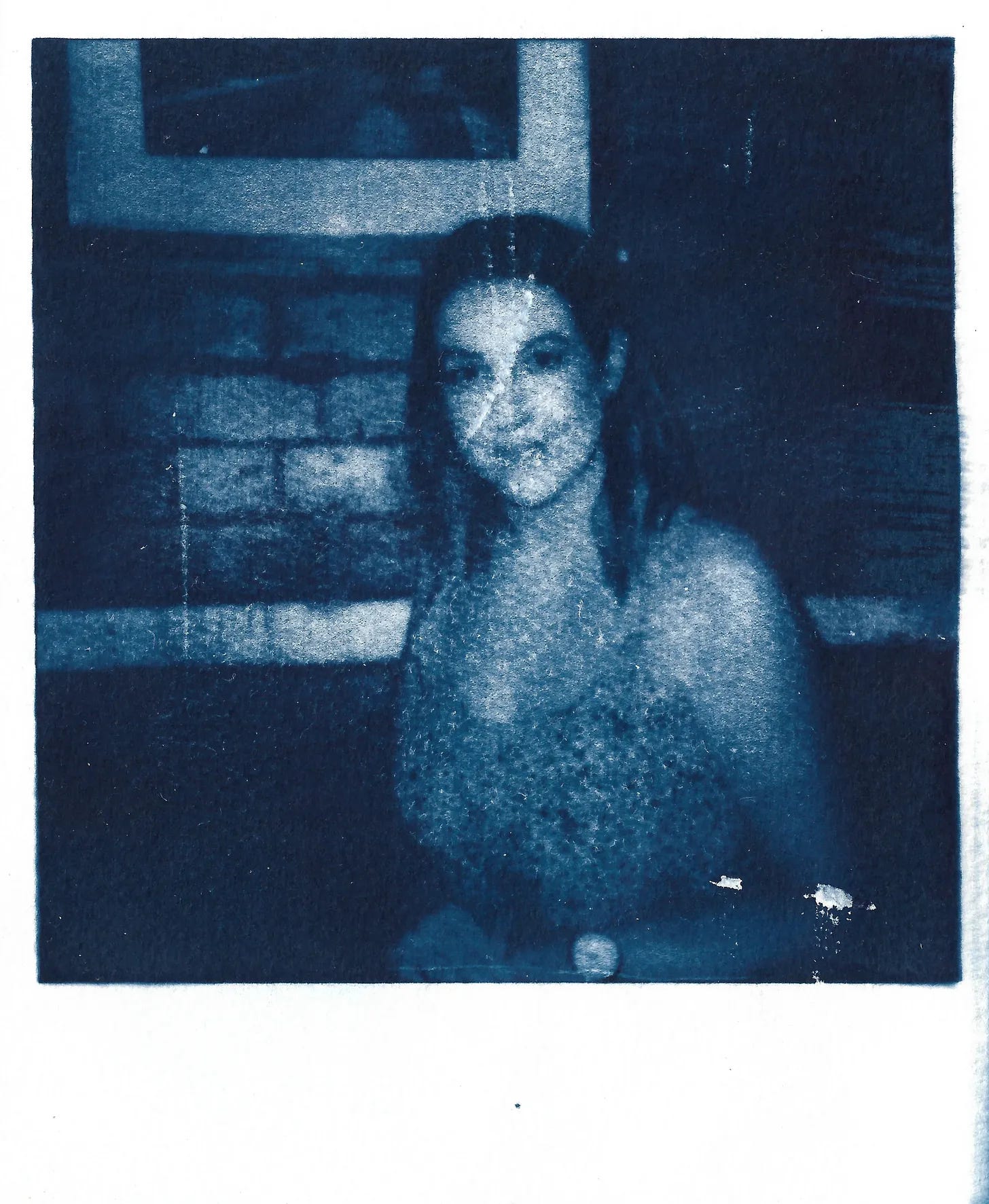

A few years ago I had a creative dry spell, culminating in a 133-day period (yes, I counted), without taking a single photograph, not including using my iPhone. One hundred and thirty-three days. That is very poor as a photographer, and it definitely was not helping me to move forward with my practice. I place the blame on the combination of post-degree burnout and lockdown-related ennui. I could not face picking up the camera.
Despite having a temporary aversion to my camera, I still wanted to create something, anything, so I began to create some cyanotypes. The simplicity and beauty of cyanotypes, for me at least, is that it is a slow process. The chemical process is in charge here, not the artist. Waiting for UV light, ferric ammonium citrate and potassium ferricyanide to work their magic is a wonderful antidote to the frenetic, greedy rush of the digital shoot-edit-share process.
Not wanting to make the standard botanical cyanotypes (although I eventually capitulated and made some because, well, they’re pretty), I decided to create cyanotypes of Polaroid portraits, or Polatypes, as I had nicknamed them. The paper had been treated a few months prior in a dark cupboard and kept in a light-tight environment. No longer having access to a darkroom meant the application of the solution was done in a less than ‘perfect’ fashion, but I’ve grown to love the uneven application and the effect it has on the prints.
Waiting for the images to materialise was quite meditative; there was nothing I could do to hurry the process along, so I sat in the sunshine. I wasn't berating myself about the lack of progress in my ongoing project, but I was debating whether to expose the prints for another minute or two. Whilst I was washing the prints, I wasn't thinking about posting the results on social media, but trying to decide whether to tone them with tea and if so, which tea? Mint? Lemon? Builder’s? When the prints were drying I was only thinking about what other paper types to try. In short, I was not thinking about the outcome at all, but the process. Instead of tying myself up in knots trying to consider how creating these prints fit into my practice and therefore trying to justify the time spent creating them, I only thought about the enjoyment and satisfaction of the act of creating something.
Children aren’t taught to look at the bigger picture, to analyse why they coloured the car blue instead of red, or why they used pencil crayons instead of felt tip pens. Children are encouraged to explore their creativity and often do so in non-judgmental environments. They have the freedom to enjoy the act of colouring in a picture for no other reason than because they want to. Adult artists are often seeking to make a statement through their work, but this can sometimes be exhausting.
So I will continue to take a childlike, guilt-free approach to creating work and not stress or judge myself because my project has stalled. Because any time spent creating is never wasted, and my playtime may lead me to create something truly amazing.








Love the childlike - chilled approach. I like to refer to as the let go let flow! Thanks for sharing your process as a creative artist. Writing I find myself at these crossroads of perfection and creativity somehow gets lost in translation. Lovely article
Pretty funny too: temporary aversion to my camera. Even it happens sometimes temporary aversion to photography… Cyanotype is easy going and the random results are one more challenging motivation